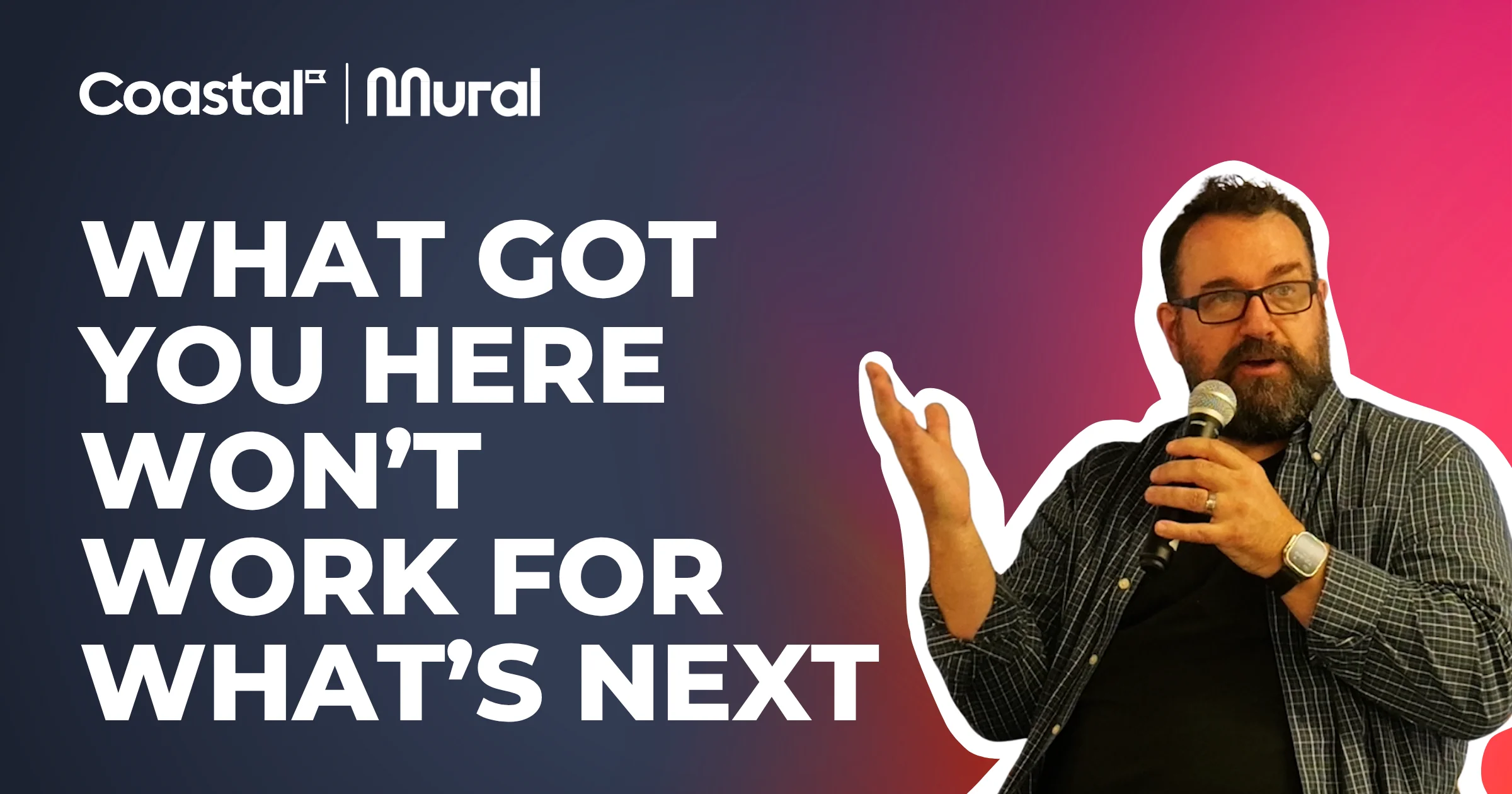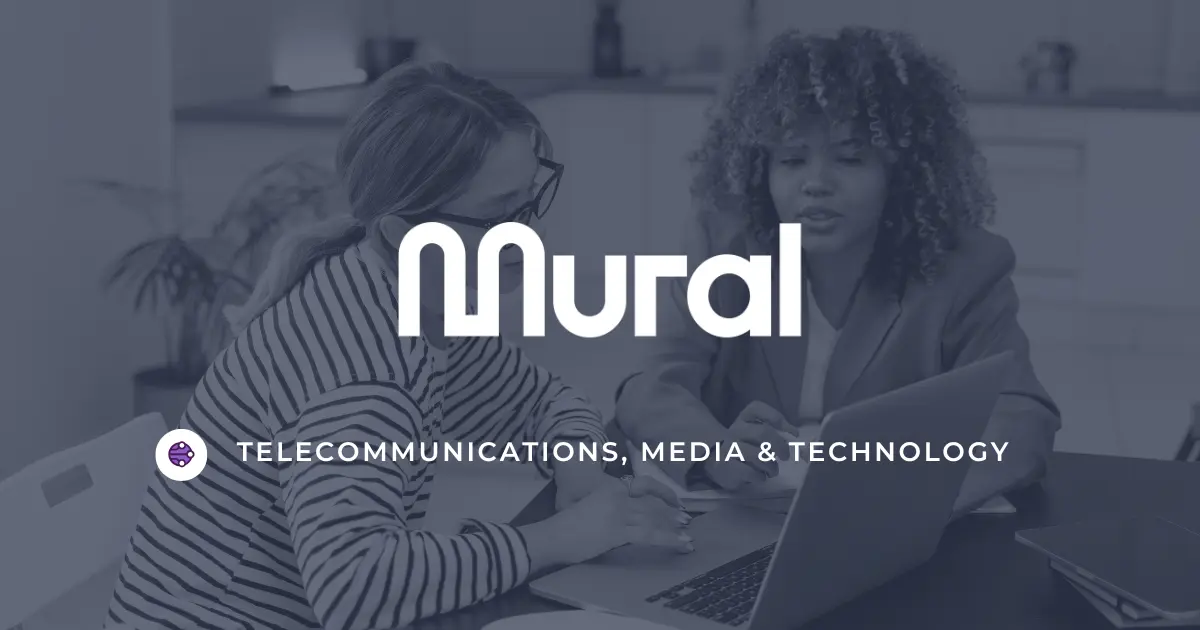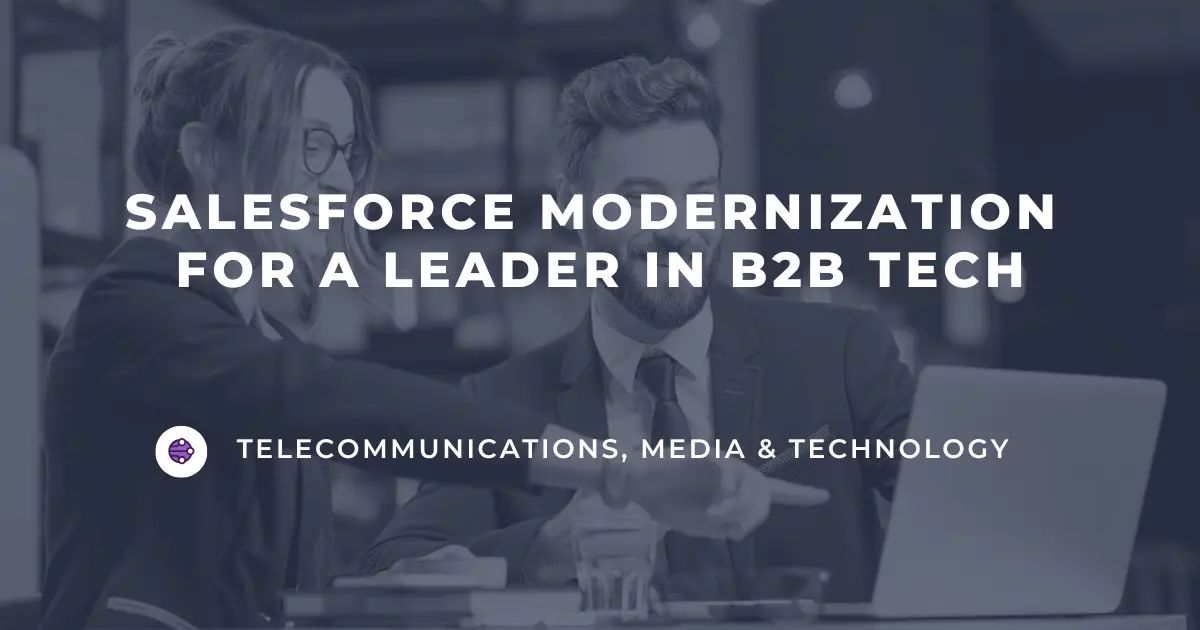High-tech investment from private equity (PE) firms—spanning fledgling SaaS ventures to established enterprise software providers—continues to climb, even amid market fluctuations.
Many of these PE-backed companies are now nearing the end of the typical five-year “hold,” where the pressure to prove profitable growth intensifies. Whether you’re eyeing an acquisition or gearing up for an IPO, investor expectations remain clear: drive top-line revenue while safeguarding EBITDA margins.
Of course, juggling both growth and efficiency isn’t straightforward. As PE investors and boards push for tighter cost controls, digital transformation in areas like quote-to-cash automation, revenue process optimization, and AI-driven sales and service are accelerating.
In this post, we’ll explore:
- The Five-Year PE Hold – Why this window still anchors strategic decisions in high tech.
- Key Market Forces – How rising exit opportunities and an “efficiency-first” mindset are shaping investor demands.
- Salesforce as an Enabler – Practical ways Revenue Cloud Advanced, AI-driven Seller Activation, and streamlined CPQ can refine your revenue operations at every stage of the hold.
Whether you’re just starting your PE journey or sprinting toward that looming exit, you’ll find here a roadmap for value-driven, sustainable growth—no matter how the market moves.
The Five-Year PE Hold: Still the Norm, Now Under More Pressure
Private equity (PE) firms often plan on a five-year “hold period” for the high-tech companies in their portfolios. They invest, work alongside leadership to expand revenue and profitability, and target an exit—whether through a sale or an IPO—around the five-year mark.
While the length of this hold period hasn’t changed dramatically, the pressure within that window has intensified.
Why the Spotlight on EBITDA Has Grown Brighter
PE investors are increasingly laser-focused on EBITDA—not just top-line revenue. As the tech market matures, many PE firms and boards are demanding profitable growth instead of the “growth at any cost” playbook. This means:
Efficiency Gains Are Non-Negotiable
Simply hiring more sales reps to boost revenue isn’t enough. PE sponsors push for tools and processes that enable scalable growth, for example:
- Agentforce AI SDRs that autonomously handle prospecting, lead qualification, and initial outreach—accelerating pipeline growth without adding headcount.
- Automated revenue operations to reduce manual tasks in billing or deal management
- AI-driven insights to identify cross-sell opportunities
- CPQ (Configure, Price, Quote) solutions that streamline quoting without letting costs skyrocket.
Exit Timelines Vary, but Readiness Must Be Constant
While five years is typical, various factors (interest rates, strategic buyers, tariffs, IPO windows) can accelerate or delay an exit. Acquisitions can happen earlier, or an IPO may be delayed beyond five years.
As a result, leadership teams can’t wait until Year 4 to optimize. They need to show consistent efficiency gains and EBITDA improvements at each stage.
AI Is Challenging the 5-Year Hold Convention Wisdom
Investors and potential buyers want proof that your tech stack and processes aren’t stuck in 2020. Early wins—such as an AI-powered customer service pilot or an upgraded CPQ implementation—can demonstrate that your product and operations are forward-thinking, lean, and scalable.
Beyond just hitting EBITDA targets, PE firms are increasingly scrutinizing how well companies embed AI into core operations. AI-driven efficiencies—whether in sales, service, or finance—are becoming a key factor in valuation discussions.
The “Constant Improvement” Mindset
Because an exit can happen sooner or later than expected, high-tech leaders increasingly favor a continuous-improvement approach over large, single-phase transformations. Agile “sprints,” whether it’s a quick CPQ remediation or an AI-based seller-activation project, allow companies to:
- Capture Value Quickly: Projects delivering ROI in months (not years) resonate with investors and prospective acquirers.
- Maintain Flexibility: If a buyer emerges in Year 3, you can point to recent, high-impact enhancements. Even if you hold until Year 6, you’ll still be delivering steady efficiency gains.
- Manage Change Incrementally: Rather than waiting for a major overhaul mid-hold, iterative upgrades keep boosting EBITDA—everything from surfacing real-time product-usage insights for sellers to implementing a unified revenue management solution (like Salesforce Revenue Cloud).
Why This Matters for High-Tech Executives
Although the five-year PE hold remains a helpful guide, market unpredictability and heightened investor scrutiny make it essential to address technology, revenue processes, and scalability earlier—often sooner than initially planned.
The upside is that these changes aren’t just for placating investors; they also yield tangible benefits for your bottom line, competitive positioning, and long-term resilience.
3 Key Market Forces Elevating the Stakes
Even with a solid plan for the standard five-year PE hold, certain external factors can intensify the pressure for profitable growth. Here are the market forces making a real impact on high-tech executives now:
1. M&A: More Buyers, Faster Timelines
Strategic and PE Acquirers Alike
With more “dry powder” to invest, private equity firms are on the hunt for high-potential tech assets earlier in the hold cycle. At the same time, larger tech incumbents are resuming strategic acquisitions to bolster their product portfolios.
Outcome: A compelling exit offer might arrive years ahead of schedule—making operational readiness a must from Day 1.
2. IPO Windows: Opening (But Not for Long)
Market Hints of Revival
While tech IPOs have slowed in recent years, there are signs of life as interest rates stabilize. Still, windows for going public can close quickly.
Outcome: To keep IPO options viable, PE firms and boards expect clean financials, predictable revenues, and visible EBITDA—all of which rely on robust, efficient processes.
3. The Intensified EBITDA Mandate
Investors Demand Profitability
Even in traditionally high-growth sectors like SaaS, investors want to see a clear path to profit, not just top-line gains.
Outcome: Every transformation initiative—from upgrading CPQ to embedding AI—must tie directly to efficiency, cost savings, or margin improvement. Failure to show near-term ROI raises skepticism about the company’s long-term viability.
Why These Forces Demand Action Now
Regardless of whether your ideal exit is a sale, merger, or IPO, the market doesn’t wait. A strategic acquirer might surface next quarter, or a favorable IPO window could briefly open in Year 3 before slamming shut. In every scenario, demonstrating stable, profitable revenue growth is the best hedge against uncertainty.
Up next, we’ll explore how high-tech companies can address these pressures head-on by deploying key Salesforce solutions—like Revenue Cloud, AI-driven Seller Activation, and CPQ enhancements—to deliver measurable EBITDA improvements and enhance operational readiness in a shorter timeframe.
Addressing the Pressure Head-On: 3 High-Impact Moves for High Tech
With exit windows potentially opening (or closing) sooner than expected, high-tech leaders can’t afford lengthy, years-long overhauls.
Instead, they’re turning to focused, high-ROI initiatives that simultaneously improve the bottom line and position the company as a compelling target for investors or acquirers.
Below are three solution areas that stand out in today’s market:
1. From PLG to SLG: Activating Sellers with Real-Time Product User Insights
What It Is
- Product-led growth (PLG) strategies center on building momentum from within the product itself—leveraging free trials or usage analytics to spark adoption.
- Seller-led growth (SLG) extends PLG by surfacing user-behavior data directly to sales teams. This enables reps to identify “power users” and champions and pull them into deal cycles sooner.
Why It Matters
- Faster Deal Velocity: By integrating real-time product data into Salesforce, sellers can spot high-usage accounts or features ripe for upsell—shortening sales cycles.
- Lower Customer Acquisition Cost (CAC): Reps focus on users who’ve already demonstrated engagement, so each deal is more likely to close with less effort.
- Stronger EBITDA: Improved efficiency in targeting prospects translates to higher win rates without ballooning sales headcount.
2. CPQ to Revenue Cloud: Optimizing Quote-to-Cash (and Beyond)
What It Is
- CPQ (Configure, Price, Quote) solutions streamline the creation of accurate quotes, particularly for complex or subscription-based offerings.
- Salesforce Revenue Cloud goes a step further, unifying quoting, billing, and revenue recognition under one umbrella—essential for SaaS and other usage-based models.
Why It Matters
- Scalable Profitability: A modern quote-to-cash system reduces manual errors and billing disputes, accelerating cash flow and protecting margins.
- Exit-Ready Financials: Investors pay close attention to how predictable your revenue is. Having a robust revenue management framework in place adds credibility and simplifies due diligence.
- AI & Automation Potential: Revenue Cloud seamlessly integrates with Salesforce Agentforce or other AI layers, so you can optimize pricing strategies and billing schedules automatically.
3. AI-Infused Service and Sales Processes
What It Is
AI-driven solutions—such as Salesforce Agentforce—go beyond simple chatbots or predictive lead scoring. They can autonomously handle tasks like basic case resolution, routing, and upsell recommendations, reducing (and sometimes eliminating) the need for human intervention in repetitive workflows.
Why It Matters
- Autonomous Action
When Agentforce identifies routine or low-complexity requests, it can take immediate action—resolving tickets, updating records, or nudging free users toward an upgrade—all without relying on a human agent. This frees your staff to focus on higher-value interactions, lowering operational costs and response times. - Immediate Efficiency Gains
Automating repetitive tasks (like triage or standard FAQs) cuts down on manual work hours. By shrinking resolution times, you also boost customer satisfaction—a plus for both day-to-day ops and exit readiness. - Board-Level & Investor Credibility
Demonstrating real AI adoption, rather than experimentation, can raise your profile with investors. AI-driven processes signal you’re ahead of the tech curve, often commanding higher valuation multiples. - Data-Driven Insights
By analyzing user behaviors, product usage, and support patterns, Agentforce uncovers hidden churn risks or prime upsell moments. These insights let your team act proactively, driving incremental revenue and better retention metrics.
Whether you’re integrating AI for the first time or scaling existing automations, the autonomous functions of solutions like Agentforce can deliver immediate ROI—and, perhaps more importantly, a stronger story for potential acquirers or investors.
Right Plays for Your Stage
The solutions above aren’t all-or-nothing; the key is sequencing. Some companies tackle seller activation first for a near-term revenue boost, then proceed to CPQ transformations. Others may start with Revenue Cloud to lay a robust financial foundation, followed by AI pilots that accelerate efficiency.
But no matter where you start, time-to-value is critical. Prioritize projects that deliver tangible ROI in months, not years, so you can demonstrate credible progress to both your current PE sponsors and any future suitors who may knock on your door earlier than anticipated.
In the next (and final) section, we’ll detail how to bring these initiatives together into a cohesive roadmap—one that aligns with your specific stage in the PE hold period and keeps you ready for any exit opportunity that arises.
Building a Roadmap for Every Stage of the PE Hold
We’ve established that profitable scalability and operational readiness are vital under private equity (PE) scrutiny. But how do you apply these principles across the different phases of a five-year hold—especially when the exit could come earlier or later than you expect?
Below is a simple, flexible approach to keep your company on track, no matter where you are in the journey, and how Salesforce solutions can enable each step.
Early-Stage (Years 1–2)
Primary Focus: Establish a robust tech foundation and secure quick wins
Seller Activation via Salesforce Sales Cloud
- Key Step: Integrate product-usage metrics or free-trial data into Sales Cloud so reps can see high-usage prospects in real time.
- Why It Works: This turns product-led momentum into well-timed selling opportunities, increasing conversion and expansion rates without adding headcount.
Implement or Remediate Salesforce CPQ
- Key Step: Deploy Salesforce CPQ (Configure, Price, Quote) or optimize an existing instance for accurate quoting, bundling, and discount logic.
- Why It Works: Automated, rules-driven quotes eliminate friction for sellers and customers, reducing errors and approval delays—critical as you prepare for more sophisticated revenue management down the line.
Outcome: You’ve laid essential groundwork—accurate quoting, basic AI or usage-based insights—ensuring you can scale more efficiently as you move into mid-stage years.
Mid-Stage (Years 3–4)
Primary Focus: Accelerate operational excellence for measurable EBITDA gains
Unify Your Quote-to-Cash with Salesforce Revenue Cloud
- Key Step: Move beyond standalone CPQ to Salesforce Revenue Cloud, which consolidates quoting, billing, and revenue recognition in a single ecosystem.
- Why It Works: This unified approach streamlines complex billing scenarios (subscriptions, usage-based pricing), improves forecasting accuracy, and delivers real-time revenue insights—key to showcasing profitability to PE boards or future acquirers.
Embed AI via Agentforce in Sales & Service
- Key Step: Integrate Salesforce Agentforce features, such as predictive lead scoring, next-best-offer suggestions, or AI-driven case routing.
- Why It Works: By automating mundane tasks and surfacing hidden opportunities, AI reduces overhead, boosts sales productivity, and demonstrates a modern tech stack—further impressing potential investors.
Outcome: With a fully integrated revenue management process and AI-driven insights, you’re not just growing top-line sales but also optimizing margins—crucial proof points for a successful exit.
Late-Stage (Year 5 and Beyond)
Primary Focus: Polish any operational or financial gaps to present a clean exit story
Targeted CPQ & Billing Remediations in Revenue Cloud
- Key Step: Audit your Revenue Cloud or CPQ setup for inconsistencies (e.g., discounting logic, renewal management, or incomplete data) that could surface in due diligence.
- Why It Works: Smooth, verifiable revenue operations reduce red flags for potential buyers, while accurate metrics increase confidence in forecasts and financial statements.
Advanced AI & Automation in Service Cloud
- Key Step: Deploy or refine Salesforce Service Cloud with Agentforce for faster case resolutions, proactive up-sell offers, or advanced chatbots.
- Why It Works: Showcasing an innovative, AI-driven customer experience can give you an edge in valuation discussions, proving you’re ready for the next phase of tech evolution.
Outcome: By now, you have lean quote-to-cash operations and data you can trust for audits. Coupled with AI-powered support and cross-selling, you tell a compelling story of efficiency and innovation—whether you exit exactly at Year 5 or end up extending the hold.
Flexibility & Momentum: Staying Ready for the Unexpected
Rather than waiting until “the right time,” it’s best to structure these initiatives in short, time-boxed sprints that continuously deliver tangible ROI. If a buyer materializes in Year 3, you can highlight recent, high-impact transformations. Even if the exit is delayed until Year 6, you’ll still steadily boost EBITDA.
Practical Steps to Stay Nimble
- Baseline Assessment: Identify the most urgent process gaps (like inconsistent quoting or disjointed billing) that could hamper quick growth or derail an exit deal.
- Time-Boxed Projects: Tackle each enhancement—be it CPQ optimization, Revenue Cloud integration, or Agentforce for sales/service—in targeted sprints (4–12 weeks).
- KPIs That Tie to EBITDA: Measure success using metrics that matter to potential buyers, such as quote-approval time, expansion rate, or cost-per-support ticket.
- Build on Wins: Once an improvement has shown ROI (e.g., 20% faster quoting approvals), expand or layer on additional capabilities, like advanced service automation or subscription billing enhancements.
Stay Ready, Keep Growing
In high tech, the five-year PE hold sets a milestone—but exits rarely follow a tidy schedule. Markets shift, buyers appear early, or opportunities arise when you least expect. Through each twist, profitable scalability is your trump card.
By layering Salesforce solutions—CPQ, Revenue Cloud, AI-enabled insights—into bite-sized initiatives, you can steadily boost EBITDA, lock in operational excellence, and craft a compelling investor story.
Where does Coastal fit?
We’ve helped countless high-tech firms navigate these same pressures, blending short, high-impact sprints with a long-term view on exit readiness.
If you’d like to refine your revenue operations, unify quote-to-cash, or lay the groundwork for AI-driven service, we can show you what’s worked for others—and tailor it to your unique roadmap.
Ultimately, success comes from staying agile enough to seize opportunities whenever they appear. Let’s connect and see how we can translate these strategies into real gains for your team—both today and well beyond the five-year mark.



